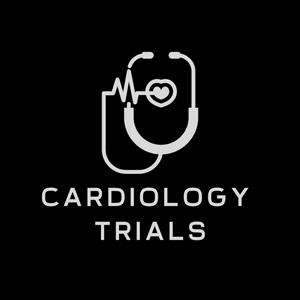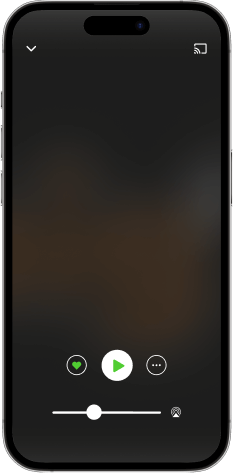Review of the A-HeFT trial
N Engl J Med 2004;351:2049-2057Background: Endothelial dysfunction, reduced nitric oxide availability, and increased oxidative stress occur in patients with heart failure and contribute to cardiac remodeling. In the V-HeFT I trial, combining isosorbide dinitrate (a nitric oxide donor) with hydralazine (an antioxidant) improved outcomes in patients with systolic heart failure. However, its long-term effectiveness in patients already receiving neurohormonal blockade was unclear.Cardiology Trial’s Substack is a reader-supported publication. To receive new posts and support our work, consider becoming a free or paid subscriber.Racial differences exist in heart failure prevalence, mechanisms, and outcomes. Patients who identify as Black may have a less active renin–angiotensin system and lower nitric oxide availability. Prior analyses suggested that Black patients respond well to isosorbide dinitrate + hydralazine and respond less to Angiotensin Converting Enzyme Inhibitors (ACEi). For example, in a subgroup analysis of the V-HeFT I trial, isosorbide dinitrate + hydralazine reduced mortality in Black but not White patients.The African-American Heart Failure Trial (A-HeFT) sought to assess the efficacy of isosorbide dinitrate + hydralazine in Black patients with systolic heart failure.Patients: Patients were eligible if they self-identified as Black (defined as African decent), and had NYHA class III or IV heart failure for at least 3 months. The left ventricular ejection fraction had to be 35% or less or less than 45% if the ventricle was dilated. In addition, patients had to be on guideline medical therapy for at least 3 months.Patients were excluded if they had acute coronary syndrome or stroke within 3 months, cardiac surgery or percutaneous coronary intervention within 3 months, significant valvular disease, hypertrophic or restrictive cardiomyopathy plus many others.Baseline characteristics: Patients were recruited from 161 centers in the United States. The trial randomized 1,050 patients – 518 randomized to receive isosorbide dinitrate + hydralazine and 532 to receive placebo.The average age of patients was 57 years and 60% were men. The average left ventricular ejection fraction was 24% and the average left ventricular internal diastolic diameter was 6.5 cm. The cause of cardiomyopathy was ischemic in 23% of the patients, hypertensive in 39%, idiopathic in 26%, and other causes constituted the rest. The NYHA class was III in 96% of the patients. The average systolic blood pressure was 126 mm Hg.Approximately 40% had diabetes, 17% had chronic kidney disease and 17% had atrial fibrillation.At the time of enrollment, 90% were taking a diuretic, 69% were taking an ACEi, 17% were taking an angiotensin receptor blocker, 74% were taking a beta-blocker, 39% were taking spironolactone and 60% were taking digoxin.Procedures: The trial was double-blinded. Patients were randomized in a 1:1 ratio to receive fixed-dose combination of isosorbide dinitrate + hydralazine or to receive placebo. The initial dose was one tablet taken three times daily, containing either placebo or a combination of 37.5 mg of hydralazine and 20 mg of isosorbide dinitrate. If no side effects, the dose was increased to two tablets three times a day.Patients had follow up by phone every month and clinic visits every 3 months.Endpoints: The primary endpoint was a composite of weighted values of all-cause mortality, first hospitalization for heart failure within 18 months, and change in quality of life at 6 months. Quality of life was assessed using the Minnesota Living with Heart Failure Questionnaire, a 21-question self-administered questionnaire in which scores range from 0 to 5, with higher scores reflecting worse quality of life.The table below summarizes how the weighted score for the primary outcome was calculated.Analysis was performed based on the intention to treat principle. The main manuscript did not mention the estimated number of events for sample size calculation but did mention that 1,100 patients would provide sufficient power with a p Results: The trial was stopped early after 1,050 patients were randomized (instead of the planned 1,100) and the mean follow up time at the time of trial termination was 10 months (planned follow up time was 18 months). The target dose was achieved in 68.0% of the patients in the isosorbide dinitrate + hydralazine group.The primary composite score was lower in the isosorbide dinitrate + hydralazine group (-0.1±1.9 vs -0.5±2.0; p= 0.01). Isosorbide dinitrate + hydralazine reduced the outcome of all-cause death (6.2% vs 10.2%; p= 0.02) and first hospitalization with heart failure (16.4% vs 24.4%; p= 0.001). Quality of life was also better with isosorbide dinitrate + hydralazine (-5.6± 20.6 vs -2.7±21.2; p= 0.02).Isosorbide dinitrate + hydralazine was associated with more headaches (47.5% vs 19.2%; p No subgroup analysis was provided.Conclusion: In Black patients with systolic heart failure, isosorbide dinitrate + hydralazine reduced the composite of weighted scores of all-cause mortality, first hospitalization for heart failure within 18 months, and change in quality of life at 6 months.In our opinion, the trial has several limitations that affect the adoption of its findings. First, the primary endpoint was a composite of weighted scores that included hard outcomes such as all-cause mortality and heart failure hospitalization, alongside a softer measure - quality of life. The use of weighted scoring for outcomes is not traditional in trials of cardiovascular medicine. It introduces complexity and may obscure the true magnitude of treatment benefit, particularly given that the scoring system used in this trial was arbitrary. Second, the manuscript lacks details regarding power calculations. Third, the trial was stopped early, raising the possibility that a longer follow-up could have resulted in a smaller observed effect size. Fourth, the authors did not report all-cause hospitalizations, an important outcome, especially considering the high rate of adverse events associated with isosorbide dinitrate + hydralazine. While a reduction in all-cause mortality was observed, the study was not powered for this as a primary outcome. Finally, the three-times-daily dosing regimen may pose adherence challenges, particularly in real-world settings where polypharmacy is common.It is also important to note that the trial generated some controversy due to its enrollment of only self-identified Black patients. This design has raised concerns about the ethics and implications of race-based medicine. Critics argue that race is a social construct rather than a biological determinant, and relying on it for treatment decisions may oversimplify the complex interplay of genetic, socioeconomic, and environmental factors.Cardiology Trial’s Substack is a reader-supported publication. To receive new posts and support our work, consider becoming a free or paid subscriber. Get full access to Cardiology Trial’s Substack at cardiologytrials.substack.com/subscribe


